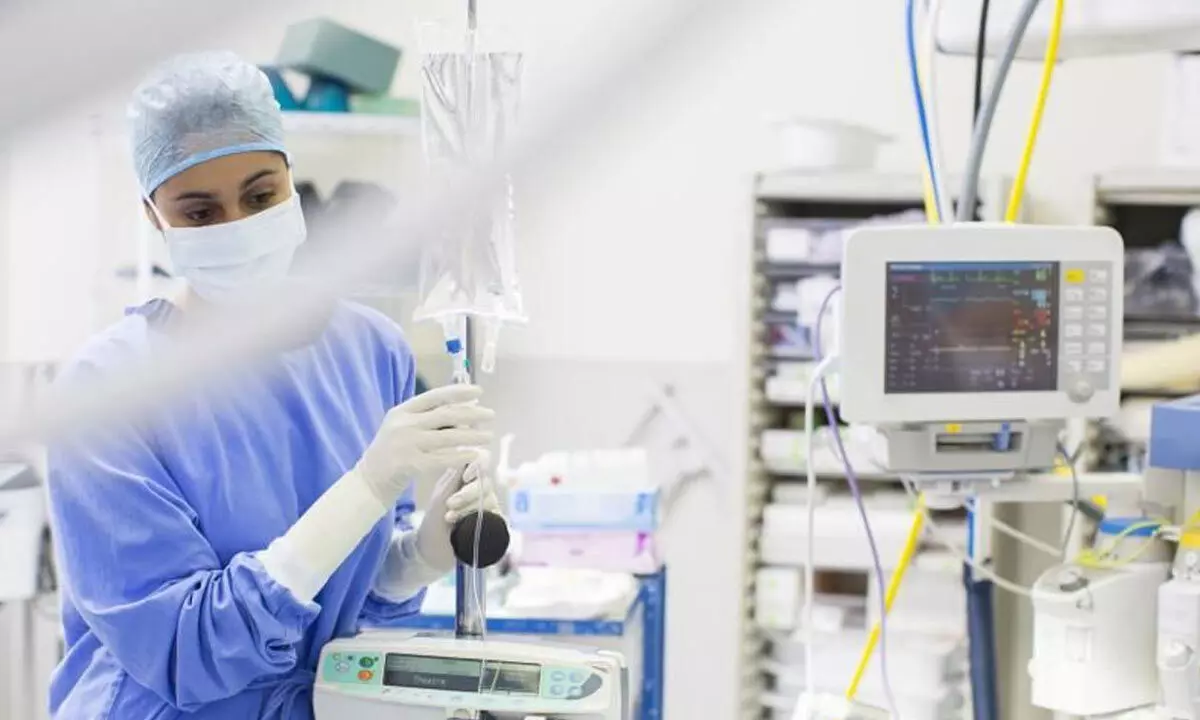Timely thrust to medical devices sector
Timely thrust to medical devices sector

The central government has recently launched three major policy initiatives related to the medical devices industry, which will go a long way in boosting the morale of the sagging sector and will help fulfil the country’s aspirations to become Aatmanirbhar in medical devices. The National Medical Device Policy 2023, the Exports Promotion Council for Medical Devices and the Scheme for Assistance to Medical Devices Clusters for Common Facilities (AMD-CF) are the three recent initiatives taken by the central government to reduce the import dependence of the fledgling sector.
On April 26, the Union government approved the National Medical Devices Policy (NMDP), 2023 with an ambitious aim to help the growth of medical devices industry from the present $11 billion to $50 billion in the next five years. The policy will help boost local manufacturing, help traders and importers to start investing in putting up factories and end the 70-80% import dependency forced upon India and the ever-rising import bill, which last year shot up by a steep 41% to over Rs 63,000 crore and make quality healthcare accessible and affordable for common masses worldwide.
The policy will facilitate an orderly growth of the medical device sector to meet the public health objectives of access, affordability, quality and innovation. It lays down a roadmap for accelerated growth of the medical devices sector to achieve access & universality, affordability, quality, patient-centred quality care, preventive health, security, research and innovation and skilled manpower.
Of course, it is a welcome step by the central government towards making India self-sufficient in the medical devices market. This provides an opportunity to boost domestic production of medical devices and reduce the need for imports. Increased domestic production will also result in better local access, affordable prices and a chance to innovate within the medical devices sector of the country. Definitely, the will provide the required support and directions to strengthen the medical devices industry into a competitive, self-reliant, resilient and innovative industry that caters to the healthcare needs of not only India but also of the world.
In yet another major initiative to boost the sector, Union Minister for Chemicals and Fertilisers Dr Mansukh Mandaviya recently announced the launch of Exports Promotion Council for Medical Devices, which will help bring in coordinated inter-ministerial policy measures for unleashing the huge export potential and investment potential of over Rs. 80,000 crore for manufacturing medical devices for the global market in India’s quest to be one of top 5 preferred supplier bases in the world.
The new Council, which will have an exclusive focus on the implementation of trade-related initiatives and easing of trade issues in the medical devices sector, will be on the lines of the Pharmaceuticals Export Promotion Council of India (Pharmexcil), which played a key role in promoting exports of pharmaceutical products. This will spur entry of the global market and will encourage domestic players to enhance quality standards and production capacity.
India currently exports Rs 23,766 crore (2021-22) of medical devices up from the previous year’s Rs 19,736 crore. However, with almost 80 per cent of the medical devices demand in the country met through imports, the government and the medical devices industry are looking at various methods to improve domestic manufacturing so as to boost exports. Of course, this strategic measure will go a long way in accelerating exports of Indian medical devices.
AMD-CF will have a proposed financial outlay of Rs. 300 crore. This will offer financial assistance for strengthening the existing and new medical device clusters through the creation of common infrastructure facilities. The scheme will help in boosting the domestic manufacturing capacity and improving the quality of clusters for sustainable growth of the medical devices sector. The existing manufacturing clusters are traditionally and have common facilities, even as the Medical Devices Parks have planned clusters with shared common infrastructure. It is indeed a great start to strengthen the existing and new medical device clusters through creation of common infrastructure facilities.
The new scheme is timely as it was very important to build on the existing skills and knowledge pool and help make these manufacturing units located in the existing clusters to become more competitive by allowing expansion with minimal capital expenditure by sharing capital expenditure of new facilities. The three initiatives will augur well for the domestic medical device industry.


